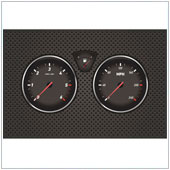| Tips on creating dashboards |
A dashboard is an easy to read and comprehend representation of data that indicates the current status of a company. Most dashboards look at a company’s Key Performance Indicators (KPI), and display information graphically, and more often than not in real-time. This study of performance is often referred to as analytics, and companies can use KPIs, and the dashboards that represent them, to predict, describe and even change performance. Dashboards have become an integral part of any analytics process, and can really help a business. However, they need to be implemented properly if a business is to benefit. Here’s five tips that can help you launch useful dashboards. 1. Focus on the important 2. Do your tech due diligence With the information and metrics identified, you should look for a solution that allows you to track these to the level you want. If you’re only being offered once a week views, for example, and you need updates once a day, you’re better off continuing your search. Beyond this, you should be careful to look at the options each dashboard has, and the information it follows. You don’t want to be tracking information you don’t need, as this could throw off the effectiveness of the solution. 3. One solution won’t fit all 4. Benchmarks This pre-system tracking doesn’t have to be long, maybe three to six months – enough time to give you a solid grasp of what you want to look at. After implementation, track the same data for six months and look again. Any changes will become the new benchmark which will allow you to launch new solutions, or gauge effectiveness of the data you are collecting. 5. Back up your data Tracking data and information that is critical to a business’s operations can help you gain not only a clear picture of just how well your company is doing, but also highlight any need for changes or improvements. If you would like to find the right dashboards for your business, please contact us, we may have a solution that will drive your success. Published with permission from TechAdvisory.org. Source.
|
| Next big thing: Non dedicated devices? |
|
| Do you secure your private information? |
|
| Is IT outsourcing for me? |
|
| 7 brilliant shortcuts for Gmail |
|


 Humans are generally visual creatures. We need to see something to believe it, or be able to digest and use it. For most companies wanting to gauge their performance and success, they need to analyze existing data. The problem is, data by itself is useless. It only becomes useful once it’s collected and analyzed and presented in a way we can understand. For many businesses this is done through the use of dashboards.
Humans are generally visual creatures. We need to see something to believe it, or be able to digest and use it. For most companies wanting to gauge their performance and success, they need to analyze existing data. The problem is, data by itself is useless. It only becomes useful once it’s collected and analyzed and presented in a way we can understand. For many businesses this is done through the use of dashboards. The mobile phone has become an integral part of any business owners tech toolbox. Unlike other systems however, it has remained a largely physical device. Desktops and servers on the other hand have seen virtualization take hold, and businesses benefit from this. Is there a chance that your smartphone could see virtualization applied to its systems? It very well might do.
The mobile phone has become an integral part of any business owners tech toolbox. Unlike other systems however, it has remained a largely physical device. Desktops and servers on the other hand have seen virtualization take hold, and businesses benefit from this. Is there a chance that your smartphone could see virtualization applied to its systems? It very well might do. The Internet has become ingrained in nearly everything we do. There are many people who are barely disconnected these days. While this development is great for companies, that arguably get more out of employees as a result, there is a downside. In general, people are more than willing to share their personal and private information online. This can ruin reputations, or worse still, open you to identity theft, risks which highlight the need to secure your online information.
The Internet has become ingrained in nearly everything we do. There are many people who are barely disconnected these days. While this development is great for companies, that arguably get more out of employees as a result, there is a downside. In general, people are more than willing to share their personal and private information online. This can ruin reputations, or worse still, open you to identity theft, risks which highlight the need to secure your online information. In the developed world, outsourcing is commonly seen in two very different ways: Employees see it as a threat to job security, while companies often see it as way to capitalize on less costly labor markets. There’s little doubt that many businesses could benefit from some form of outsourcing. Why not start with one of the areas many managers and owners feel least comfortable with: IT.
In the developed world, outsourcing is commonly seen in two very different ways: Employees see it as a threat to job security, while companies often see it as way to capitalize on less costly labor markets. There’s little doubt that many businesses could benefit from some form of outsourcing. Why not start with one of the areas many managers and owners feel least comfortable with: IT. Email is one of the most important tools at a business’s disposal. It has greatly improved our communication abilities while allowing us to conduct business at a more proficient level. One of the more popular email programs is Google’ Gmail. One of the major reasons it is so popular is because it is easy to use. One function that makes Gmail even easier, yet is hardly used, is keyboard shortcuts.
Email is one of the most important tools at a business’s disposal. It has greatly improved our communication abilities while allowing us to conduct business at a more proficient level. One of the more popular email programs is Google’ Gmail. One of the major reasons it is so popular is because it is easy to use. One function that makes Gmail even easier, yet is hardly used, is keyboard shortcuts.